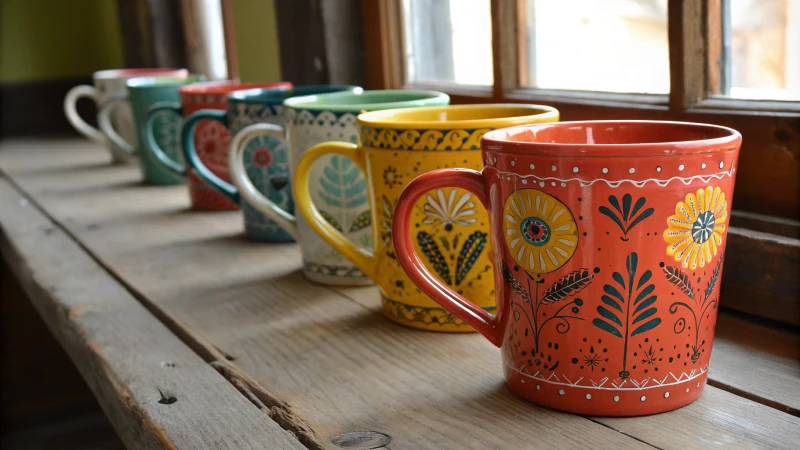
Interested in the rapidly growing ceramic mug market? Here are some ideas that might inspire your next buy or business choice!
The current trends in the ceramic mug market show a big change towards personalized designs. People are also thinking more about their health and caring for the environment. This market is expected to reach USD 9.78 billion by 2025. Understanding these trends is very important for people involved in the industry.
I explore the world of ceramic mugs. I am really amazed by how these simple items have changed. It’s not just for drinking coffee now. A mug is like a canvas for creativity. Designs are very unique and show our personalities. Materials are eco-friendly. Trends are diverse and full of life. In my journey, I noticed that people want mugs with stories. They prefer this over just holding beverages. The market may grow to USD 9.78 billion by 2025. This is exciting for manufacturers and buyers.
This blog post will look at these trends. They affect manufacturers, consumers and anyone who loves a good mug. Let’s find valuable insights. These insights help guide choices and business strategies in this lively market.
The ceramic mug market is projected to reach USD 9.78 billion by 2025.True
This claim reflects the expected growth of the ceramic mug market, indicating a significant increase in demand and consumer interest.
Personalization is not a current trend in the ceramic mug market.False
This statement contradicts the identified trends, as personalization is highlighted as a significant factor influencing consumer choices today.
What factors are driving the growth of the ceramic mug market?
Ceramic mugs are really common in our everyday lives. People use them often, from morning coffee to warm tea at night. The ceramic mug industry is probably growing quickly. This makes me very eager to explain what’s driving this rise!
The ceramic mug market is expanding. More people want quality and unique designs. Companies compete a lot with each other. People care about health and the environment now. Many like personalized gifts more these days.
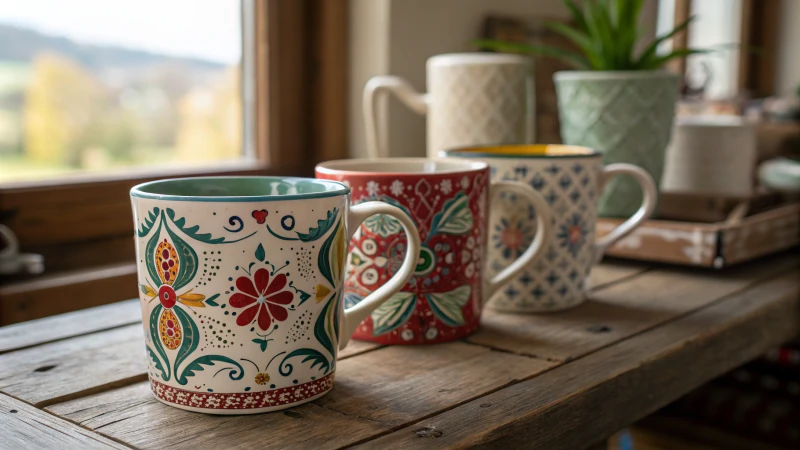
Continuous Market Growth
The ceramic mug market continues to grow. This expansion is fascinating. According to market research data, the global market was worth about USD 7.36 billion in 2023, and experts expect it to reach around USD 9.78 billion by 2025, reflecting a steady growth rate of 4.7%. This growth is particularly notable in China, where their market may hit about RMB 15 billion by 2025.
Increased Market Competition
In the ceramic industry, competition is intense! Major competitors from Jingdezhen, Zibo, and Fujian are innovating and crossing new borders with their unique methods.
| Competitor Name | Focus Area | Market Strategy |
|---|---|---|
| Jingdezhen | Product Quality | Premium design and durability |
| Zibo | Brand Influence | Strong marketing campaigns |
| Fujian | Technology Level | Advanced production methods |
This rivalry promotes creativity and excitement in the field.
Diversified Consumer Demand
Today’s consumers desire more than just usefulness in mugs. They want quality and beauty. Sustainability is also important. The perfect mug should feel satisfying to hold and look great on a shelf.
- Quality: Durable mugs for daily use make a big difference.
- Aesthetics: Unique designs attract attention and delight us.
- Health & Environment: Non-toxic, eco-friendly choices are very appealing to many.
These changing expectations drive the market in a powerful way.
Awareness of Health and Environmental Protection
I switched to ceramic mugs after discovering chemicals in plastic. Many people now care more about health and the environment. Ceramic mugs are non-toxic and safe, which fuels their popularity—very safe and healthy!
Personalization and Cultural Trends
Many people love personalized products. It’s special to have a mug that reflects our personality or culture. Custom designs and cultural motifs on mugs add meaning to everyday routines.
Gifts and Souvenirs Market Potential
Ceramic mugs make perfect gifts and souvenirs. They are thoughtful tokens for friends, family, or corporate events. Personalized mugs hold emotional value—who doesn’t enjoy a heartfelt present?
For more insights on market trends, explore market analysis1 or consumer behavior studies2.
The ceramic mug market size was USD 7.36 billion in 2023.True
This claim reflects the reported market size for ceramic mugs in 2023, indicating substantial economic activity in this sector.
Personalized mugs are less popular than standard designs.False
Consumer trends show a growing preference for personalized mugs, contradicting this claim about their popularity compared to standard designs.
How is consumer demand for personalization shaping product offerings?
Did you ever notice that the things we purchase are beginning to feel more like us? This change is interesting. Consumer demand for personalization is reshaping products. You see this especially in ceramics.
Consumer desire for personalization greatly influences product choices. Companies craft unique and customizable products. These products match personal tastes and values. Individual preferences really matter to businesses.
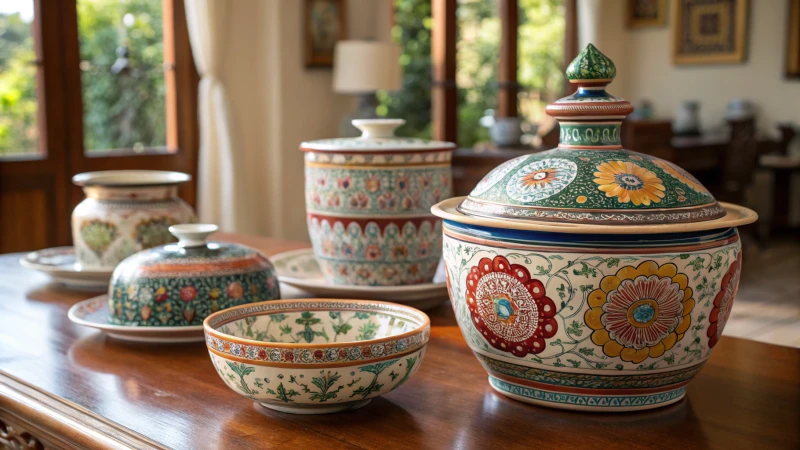
Reflecting on My Time in the Ceramic World
Reflecting on my time in the ceramic world, excitement fills me. Consumer tastes have shifted toward personalization, which feels refreshing. Crafting pieces now centers on connecting with individual stories and feelings. Every mug I produce becomes a canvas reflecting someone’s personality.
Understanding Consumer Demand for Personalization
Consumer demand for personalization has grown across many markets, ceramics included. I vividly remember my first customer wanting a unique mug design. They wished for colors and patterns to tell their unique journey. That request changed my perspective!
Today, manufacturers follow this trend with customizable options. People choose colors or add personal inscriptions. The ceramic mug industry actively adapts to these desires. Personalized items become cherished treasures for many.
The Role of Market Competition
In our competitive world of ceramics, personalization sets companies apart. Many traditional makers focus on mass production. Yet, innovators attract more customers.
| Company | Personalization Offered | Market Impact |
|---|---|---|
| MTCeramic | Customized designs and messages | Increased customer loyalty |
| Jingdezhen Ceramics | Unique artistic styles | Differentiated product offerings |
| Zibo Ceramics | Limited edition releases | Enhanced brand appeal |
My company, MTCeramic, thrives with custom designs and messages. Selling mugs means creating bonds and loyalty.
Here’s how different companies tackle this approach: offering personalization has led us to form lasting relationships that go beyond mere transactions.
Health and Environmental Considerations
Consumers consistently show increased concern for health and the environment. This awareness influences their buying decisions. People prefer personalized products from safe, eco-friendly materials.
Ceramic mugs suit this trend well. Non-toxic and eco-friendly, they appeal to health-conscious buyers. Customers appreciate our mugs made from natural clay; they value sustainability over plastic alternatives.
Cultural Significance and Personal Expression
Personalization beautifully allows personal cultural expression. I once worked with local artists on ceramic cups with traditional designs. Customers found joy seeing their heritage celebrated in tangible form.
These efforts support personalization demands and foster cultural appreciation; in today’s diverse market, promoting cultural identity is important.
Conclusion on Impacts of Personalization on Product Offerings
Considering personalization’s impact reshapes product development and marketing strategies. Following these trends is not only wise but necessary; my company adapts to the changing landscape, meeting demands and winning hearts.
Interested in improving business strategies through personalization? Explore more on marketing trends3 and consumer behavior! Let’s embrace this exciting path toward creating more personalized experiences in our industries!
Consumer demand for personalization is reshaping product offerings.True
As consumers seek unique products, companies adapt by offering customizable options, especially in ceramics.
Personalized ceramic mugs are less desirable than mass-produced ones.False
The trend shows that personalized items are perceived as more valuable, enhancing customer satisfaction and loyalty.
How Does Health Consciousness Shape the Design of Ceramic Mugs?
In my journey through the ceramic industry, I see a big change in mug design. Health awareness now plays a very important role. This shift is truly remarkable. How deeply does this awareness affect product creation? Let’s find out!
Health consciousness is very important in ceramic mug design. Designers use non-toxic materials, ergonomic features and safety certifications. Consumers today are really aware of their health. This awareness leads to wellness-focused products. Such products prioritize safety. Sustainability is also a priority.
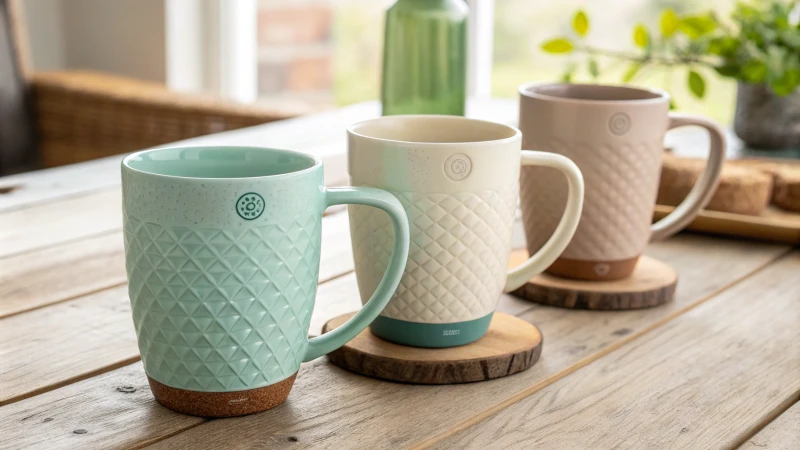
Health Awareness Shapes Material Choices
Health awareness leads me to think about the materials in ceramic mug production. I remember learning about harmful chemicals in traditional glazes. That was a wake-up call. Now, we choose non-toxic and eco-friendly materials. This choice protects both the drinker and the planet. It’s not just about creating a product; it’s about safety. Really important! Clients feel happy about using safer materials. This shows we’re on the right track. Consumer demand for wellness products is growing. Very significant.
For more insights on safe materials, you can read about ceramic mug materials4.
Design Considerations for Health
Design evolves to meet health standards. I sketch ergonomic designs that include comfortable handles and thoughtful shapes. A client once shared how our mug’s grip helped them avoid spills. Little things like this matter. Insulated walls keep drinks hot longer and prevent burns, enhancing the enjoyable experience!
Here’s a table showcasing popular design features prioritized by health-conscious consumers:
| Design Feature | Benefits |
|---|---|
| Ergonomic Handles | Prevents strain and enhances comfort |
| Insulated Walls | Keeps beverages at optimal temperatures |
| Non-slip Base | Reduces the risk of spills |
| Dishwasher Safe | Ensures hygienic cleaning |
To explore more on health-oriented designs, consider checking ergonomic mug designs5.
Consumer Preferences Driven by Health Trends
Consumer preferences change with rising health consciousness. Shoppers choose mugs that support wellness and sustainability, reflecting broader societal trends towards healthier lifestyles and environmental stewardship.
Brands now offer customizable options that allow consumers to select features aligning with their health values, such as easy-to-clean surfaces and organic materials.
I feel proud when clients choose these options because contributing to a healthier lifestyle is fulfilling!
For a deeper dive into consumer preferences, check out trends in consumer ceramics6.
The Role of Certifications in Building Trust
Certifications matter in consumer trust. Mugs with safety certifications attract health-conscious buyers like bees to honey.
Such certifications include non-toxic labels and eco-friendly methods that influence buying choices.
Trust grows when products meet safety standards; customers feel assured and stay loyal.
Here’s how different certifications affect consumer choices:
| Certification Type | Impact on Consumer Trust |
|---|---|
| FDA Approval | Ensures food safety |
| Eco-Labeling | Indicates environmental responsibility |
| BPA-Free Certification | Confirms no harmful chemicals are present |
For more information on product certifications, you might want to check importance of product safety labels7.
Health consciousness drives demand for non-toxic ceramic materials.True
Consumers prefer ceramic mugs made from safe, non-toxic materials to ensure their health and environmental safety, influencing manufacturers' material choices.
Ergonomic designs in mugs reduce the risk of strain injuries.True
Mugs with ergonomic handles are designed to enhance comfort and prevent strain, aligning with health-conscious consumer preferences.
How are manufacturers addressing environmental concerns in their products?
I explore the manufacturing world. I notice a big shift towards sustainability. Environmental issues are important. They are in our minds. Manufacturers are truly changing their approach. They focus on eco-friendly products now. This change is very significant.
Manufacturers tackle environmental problems with sustainable materials. They use energy-efficient methods and cut down on waste through clever ideas. They inform consumers about green practices. They also work together with others in the industry for a wider effect.
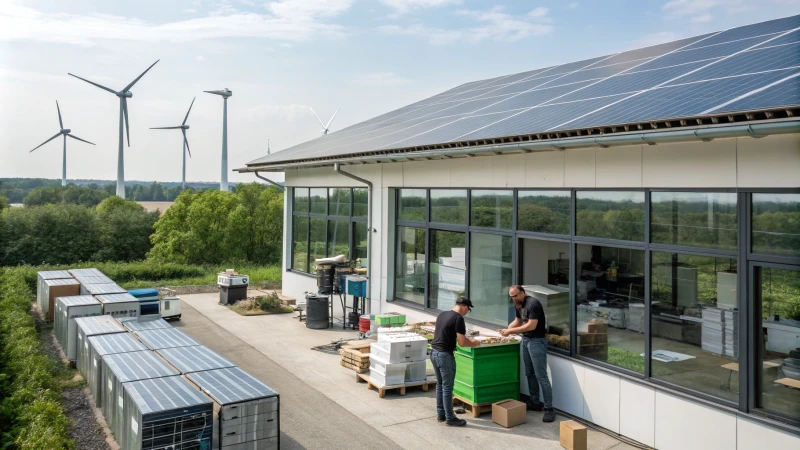
Embracing Sustainable Materials
In my experience with the ceramics industry, I have watched as manufacturers work to solve environmental problems. Now, it’s not only about making products. It’s about respecting our planet with what we create. One day, I visited a factory using sustainable materials. Workers spoke with pride about their eco-friendly choices. Their excitement was catchy. This change is not just a passing trend – it’s a very important value for many businesses.
Manufacturers are starting to use materials that harm the environment less. Ceramic mug makers now choose raw materials without toxic chemicals. These are recyclable. Brands focus not just on profit but also on protecting the planet.
This trend supports Mother Earth and meets the demand for eco-friendly items. Learning about recycled clay amazed me. Imagine how much waste we really can cut down! Some sustainable materials include:
| Material | Description |
|---|---|
| Recycled Clay | Clay sourced from previous ceramic products, reducing waste. |
| Non-Toxic Glazes | Glazes that do not contain harmful substances, ensuring safety. |
| Biodegradable Packaging | Using packaging materials that decompose naturally, minimizing landfill waste. |
For more on sustainable materials in manufacturing, check out sustainable materials8.
Implementing Energy-Efficient Processes
Progress is happening in using energy-efficient production methods. Companies upgrade equipment and switch to solar and wind energy. A conversation with another manufacturer highlighted the benefits. He invested in energy-efficient kilns, reducing his carbon footprint and costs.
This truly benefits all parties! Energy efficiency brings advantages.
For insights on energy-efficient practices, see energy efficiency in manufacturing9.
Waste Reduction Strategies
Waste reduction is central for manufacturers today. They minimize waste through:
- Recycling: Scraps and defective products become new items or materials.
- Lean Manufacturing: Streamlining cuts unnecessary waste while keeping quality.
- Zero-Waste Initiatives: All products get reused, repaired or recycled.
Some companies create closed-loop systems for repurposing returned products. Such creative methods inspire hope for manufacturing’s future.
For more information on waste reduction strategies, explore waste management in manufacturing10.
Consumer Education and Transparency
Manufacturers teach consumers about their green efforts. This openness builds trust and attracts customers who care about the environment. I find it fascinating when brands showcase sustainability labels or share practices online.
Empowering consumers helps them choose products that suit their values.
For guidance on this topic, visit consumer awareness in sustainability11.
Collaborative Efforts
Exciting collaborations are unfolding in the industry for sustainability. Manufacturers join groups and participate in eco-friendly projects. Together, they develop creative solutions to expand sustainability.
More information on industry collaboration is at industry partnerships for sustainability12.
Watching these changes happen is inspiring. When manufacturers truly embrace these practices, they can positively affect our planet.
Manufacturers are using recycled materials in their products.True
Many manufacturers are sourcing recycled materials to minimize waste and reduce environmental impact, aligning with sustainability goals.
Energy-efficient processes increase operational costs for manufacturers.False
In reality, energy-efficient processes help lower operational costs by reducing energy consumption and emissions, benefiting both the environment and the bottom line.
Conclusion
The ceramic mug market is projected to grow significantly, driven by trends in personalization, sustainability, and health awareness, reaching USD 9.78 billion by 2025.
-
Explore how market trends are shaping consumer preferences in ceramics for better insights. ↩
-
Understand the competitive landscape of the ceramic industry to make informed business decisions. ↩
-
This link offers case studies on successful personalized product implementations, helping you understand practical applications. ↩
-
Learn how material choices can impact your health when using ceramic mugs. ↩
-
Explore ergonomic designs that enhance usability and safety for ceramic mugs. ↩
-
Understand how consumer preferences are shifting due to health trends in ceramics. ↩
-
Discover the importance of certifications in promoting trust for ceramic products. ↩
-
This link offers valuable insights into sustainable materials used in manufacturing, helping you understand their benefits and applications. ↩
-
Explore various energy-efficient practices implemented in manufacturing processes to reduce environmental impact effectively. ↩
-
Discover innovative waste reduction strategies that can help manufacturers minimize waste and enhance sustainability. ↩
-
Learn how transparency and consumer education can strengthen brand loyalty among environmentally conscious customers. ↩
-
Find out how collaborative efforts between manufacturers can lead to significant advancements in sustainability practices. ↩